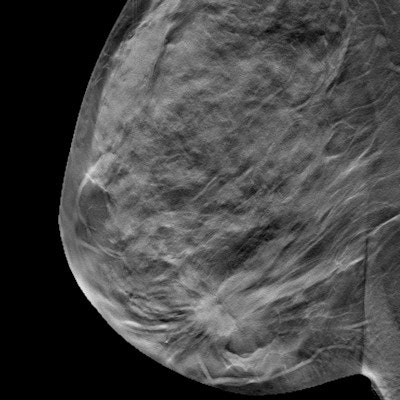
Whether digital breast tomosynthesis (DBT) is more effective than digital mammography for breast screening may depend on the country. An August 4 study in Radiology found that DBT was largely cost-effective at a threshold of $38,500 per life-year gained -- but not at $20,000 per life-year gained.
The research was conducted by a team from the Netherlands, which used a hypothetical cohort of 1 million women to generate 10,000 different outcomes.
The team found that the additional cost of DBT may not reach cost-effectiveness for countries like the Netherlands that already have low recall rates and high levels of mammography compliance. However, the benefits of DBT may be more pronounced in the U.S. and other nations with higher recall rates.
"With current data, biennial DBT screening between 50 and 74 years of age is not expected to be cost-effective at the Dutch willingness-to-pay threshold of €20,000 ($22,000 USD) per life-year gained and 3.5% annual discounting," wrote the authors, led by Valerie Sankatsing, a researcher at the department of public health at Erasmus in Rotterdam. "Internationally, a threshold of €20,000 is rather low, which also puts the conclusion into a different perspective."
For their analysis, the authors used a microsimulation model, which can generate thousands of outcomes that account for different inputs. This kind of model works well when accounting for uncertainty, making it ideal for DBT, which still has limited long-term outcome data.
The model was created and ran between March 2018 and February 2019, and it used a hypothetical cohort of 1 million women -- half screened with DBT and half screened with digital mammography. The women were reportedly born in 1970 and underwent biennial screening between the ages of 50 and 74.
The authors assumed an 80% screening compliance rate, which was based on the actual rate of women attending for screening in the Netherlands. They also estimated DBT increased sensitivity by 18%, had a 30% better positive predictive value, and cost $100 more than digital mammography.
The model ran 10,000 times and generated 10,000 incremental cost-effective pairs for DBT and digital mammography. In the analysis, DBT repeatedly proved to be both more effective and more costly than digital mammography.
| Outcomes of DBT versus mammography per 1,000 women screened | ||
| Digital mammography | DBT | |
| Life-years gained | 179.9 | 192.5 |
| Deaths averted | 13.6 | 14.5 |
| False-positive findings | 158.8 | 155.2 |
| Mean cost | €305,829 ($336,412) | €443,385 ($487,724) |
For every 1,000 women screened, DBT resulted in a 7% increase in life-years gained, averted 6% additional breast cancer deaths, and had 2.5% fewer false positives. However, DBT also had a mean lifetime cost that was $151,311 higher than digital mammography.
Whether DBT could be considered cost effective depended entirely on the threshold used. At a willingness-to-pay threshold of €20,000 ($22,000 USD) per life-year gained, DBT was only cost-effective in 36% of scenarios. But at a threshold of €35,000 ($38,500 USD), DBT was more cost-effective than digital mammography in 66% of scenarios.
The findings demonstrated that DBT may not be cost-effective in the Netherlands, which not only has a lower willingness-to-pay threshold but also excellent recall and false-positive rates with digital mammography.
In contrast, DBT for breast screening may be more cost-effective in countries with higher recall rates, such as the U.S.
"A meta-analysis evaluating recall rates with DBT compared with DM showed that the reductions in recall rates were prominently found in studies from the United States that reported high baseline recall," the authors wrote. "The decrease in recall rates and the number of false-positive results with DBT thus depends on the initial recall rate."



















